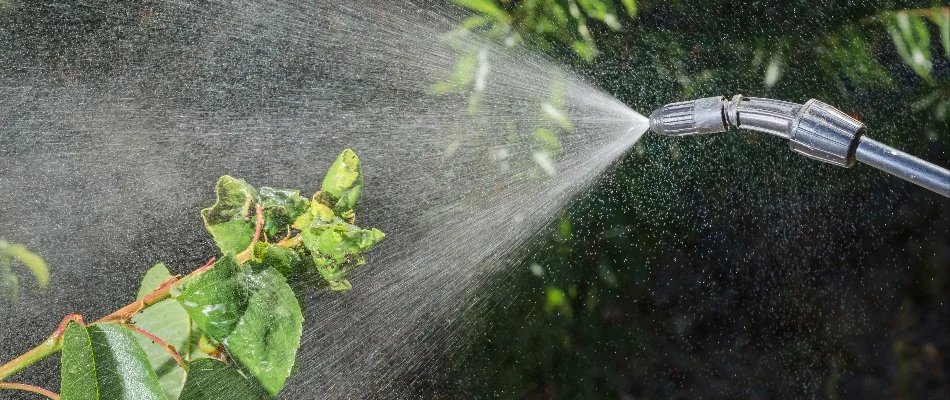If you notice a white powdery coating on the leaves of your trees and shrubs, it is likely powdery mildew, a tree disease that is commonly found in Ohio. For effective treatment of powdery mildew, it is advisable to consult a professional as they can provide curative measures to combat the infection. To prevent future outbreaks, regular plant care is essential. Fertilization treatments can help maintain the overall health and robustness of your trees and shrubs, reducing the likelihood of powdery mildew recurrence. By taking proactive steps in plant care, you can keep your landscape looking vibrant and free from powdery mildew.
What is powdery mildew and how can you identify it?
Powdery mildew is a fungal disease that affects plants and is characterized by a white powdery substance on the leaves, stems, and sometimes even flowers. It can give the affected plants a dusty or powdery appearance. This white powder is actually a mass of fungal spores that the fungus produces.
Powdery mildew thrives in warm, humid conditions and can infect a wide range of plants, including trees, shrubs, flowers, and vegetables. It typically starts as small, white spots on the leaves, which gradually expand and merge, covering larger areas of the plant's surface. In severe cases, the leaves may become distorted or stunted, and the plant's overall health and vigor can decline.
What should you do if your trees or shrubs are infected with powdery mildew?

If you notice powdery mildew on your plants, there are steps you can take to address the issue. First, remove and dispose of any infected plant parts, such as heavily affected leaves or flowers. This helps to prevent the further spread of the fungus.
For mild cases of powdery mildew, you can try using homemade remedies like a mixture of water and baking soda or a solution of milk and water, spraying it on the affected plants. These solutions may help reduce the fungal growth and slow down the spread of the disease.
However, for more severe or persistent infections, it is recommended to contact professionals. They have the expertise and access to appropriate fungicides to effectively treat powdery mildew and prevent further damage to your plants. Professional intervention is especially crucial when valuable or delicate plants are affected.
Protect your trees and shrubs from powdery mildew and other diseases with regular care.
Regular tree care practices can help prevent powdery mildew from infecting your trees and shrubs. Proper pruning and thinning of branches improve air circulation, reducing humidity and minimizing the conditions favorable for fungal growth. This allows leaves to dry quickly after rainfall or irrigation, making it less likely for powdery mildew to establish.
Additionally, applying tree and shrub fertilizers can boost plant health and strengthen their natural defense mechanisms against diseases. Well-nourished plants are better equipped to resist and recover from fungal infections, including powdery mildew. Fertilizer treatments provide the necessary nutrients for robust growth and help maintain overall plant vigor.
Regular inspections by plant care professionals can catch early signs of powdery mildew, allowing for timely intervention and treatment.
Call us today and sign up for our tree and shrub disease and insect control program.
Protect the health and beauty of your trees, shrubs, and plants with our comprehensive tree and shrub disease and insect control program. In addition to providing treatments for various plant diseases like powdery mildew, as well as insect infestations, we can also help keep your plants strong with our tree and shrub fertilization treatments. We offer our tree and shrub care services to property owners in Mansfield, OH, and surrounding areas such as Wooster and Strongsville. Give us a call today at 419-529-5296 to schedule our tree and shrub care services.



Comments (0)
Thanks for your comment!
Thanks for your feedback! Your comments have been successfully submitted! Please note, all comments require admin approval prior to display.
Error submitting comment!
There is a problem with your comment, please see below and try again.